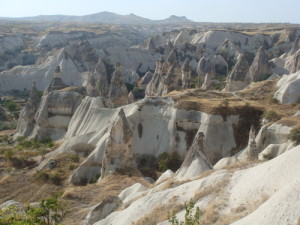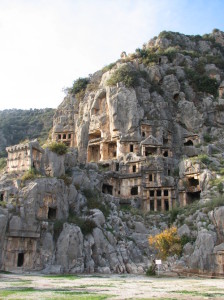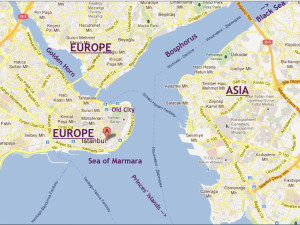Dear everyone,
I hate these kinds of emails but what’s happening in Turkey is important. I have seen the situation being misconstrued in the international media (and ignored completely by most Turkish media). I got worried calls from my parents long before my Turkish friends did, because on Friday many Turks outside Istanbul knew nothing about the protests. Now they have spread to 67 cities, thanks to social media. I don’t have a clue what is going to happen, I can only guess, but I am here so I can see what’s going on now.
Basically, this is what happens every night since I have been here (from Saturday until today): protestors gather and march, gathering pace towards nightfall, chanting for the resignation of the government. Police blast them with tear gas (more on that later) and water cannons, often at very close range. Sometimes the gas is dropped by helicopter over large areas, like last night. The protestors get angrier and more determined. Around 5AM the die-hard stragglers go home, leaving barricades blocking the road so police vans can’t follow. The protestors clean up in the morning: debris, discarded masks, paving stones, etc. Around 8PM it all starts again.
The President (Gul) tries to calm things down. The Prime Minister (Erdogan) insists that we are all extremists, alcoholics, foreigners (fair point) and anti-democratic. He is now in Morocco, which has actually calmed the situation a tiny bit.
The whys and wherefores can wait. Right now, these are the important facts:
If the police left, there would be no drama whatsoever.
Despite the scaremongering images of smashed shop fronts etc, the proportion of hooligans among protestors is actually very small. There are inevitably angry kids from the ghetto who come to these protests to throw rocks around, and they don’t care why they are there. The last few nights, I have seen protestors calming them down and getting them to put down the rocks, put out the fires, stop swearing at the police. However, the hooligan element has scared the conservative demographic – Erdogan has made much of the dangerous nature of these protests.
There is an amazing feeling of solidarity on the streets. People hand out masks, water, lotions for the tear gas, lemons to strangers. When there is a sense of panic, and people start running, a general cry of “Yavas, yavas” (slowly, slowly) calms everyone down. Football supporters wear the colours of rival teams (unheard of) and link arms, cheering each other on. I have seen two things in the past two days I have never seen in my two years in Turkey: friendly football fans and people picking up rubbish. These are both happening during a quasi-revolution – impressive.
A word on tear gas: I don’t think anyone has explained yet how debilitating it is, and how demoralising. I am so impressed that protestors have been persisting with not only sustained but increased energy, because the effects stay with you the next day in the form of a severe hangover-like grogginess and headache. Also, most protestors are on about 3/4 hours sleep.
At the time, tear gas is like a wall of pain. People have asked me what is smells like. It is not smell, it is pain. A warning note of bitterness is immediately followed by burning of any exposed skin, throat, nose and stinging tears. You cannot see and you panic. You run, you just want to get away. It is extremely effective, and so much of it has been used recently that even my friends with industrial-style gas masks cannot proceed sometimes. There is no air, just gas, so the filters in the mask are useless.
After running and returning, running and returning, hearing helicopters circling overhead and canisters being fired somewhere unseen in front, you begin to feel defeated. You feel like this could go on forever, and you wonder why you are still here.The fact that people continue their chants and their efforts to push forward is unbelievably impressive, and I am frankly humbled by the determination and spirit I have seen. I do not have the stomach for front line stuff, and I am in awe of those who do.
Please tell everyone what is going on.
The most important message is that Turkey has woken up to what it wants, or rather doesn’t want, and that is a wonderful thing. The next few days will be crucial, it’s up to the government now, but I can only echo what I saw graffiti-ed on a wall this morning: “Nothing will ever be as it was before.”
Love
Alev












































 That, and the pollution in Istanbul is getting to me. Artistic wealth, generous inhabitants, and baklava this city has in spades, but emissions controls not so much. My brother Robert is visiting and we spent much of Saturday walking through unexplored neighborhoods and hiking along the top of the 4th century Theodosian walls (the picture to the right is me talking to a dog in the slum next to the northern end of the city walls). Being able to wander aimlessly through centuries of history in a tank top in the middle of winter is a luxury I wouldn’t have even dreamed of in my four years of purgatory in freezing Cambridge. But, greedy as always, I would love to be able to spend the day outside and not feel like I smoked a pack of car-exhaust-flavored cigarettes at the end of it.
That, and the pollution in Istanbul is getting to me. Artistic wealth, generous inhabitants, and baklava this city has in spades, but emissions controls not so much. My brother Robert is visiting and we spent much of Saturday walking through unexplored neighborhoods and hiking along the top of the 4th century Theodosian walls (the picture to the right is me talking to a dog in the slum next to the northern end of the city walls). Being able to wander aimlessly through centuries of history in a tank top in the middle of winter is a luxury I wouldn’t have even dreamed of in my four years of purgatory in freezing Cambridge. But, greedy as always, I would love to be able to spend the day outside and not feel like I smoked a pack of car-exhaust-flavored cigarettes at the end of it.